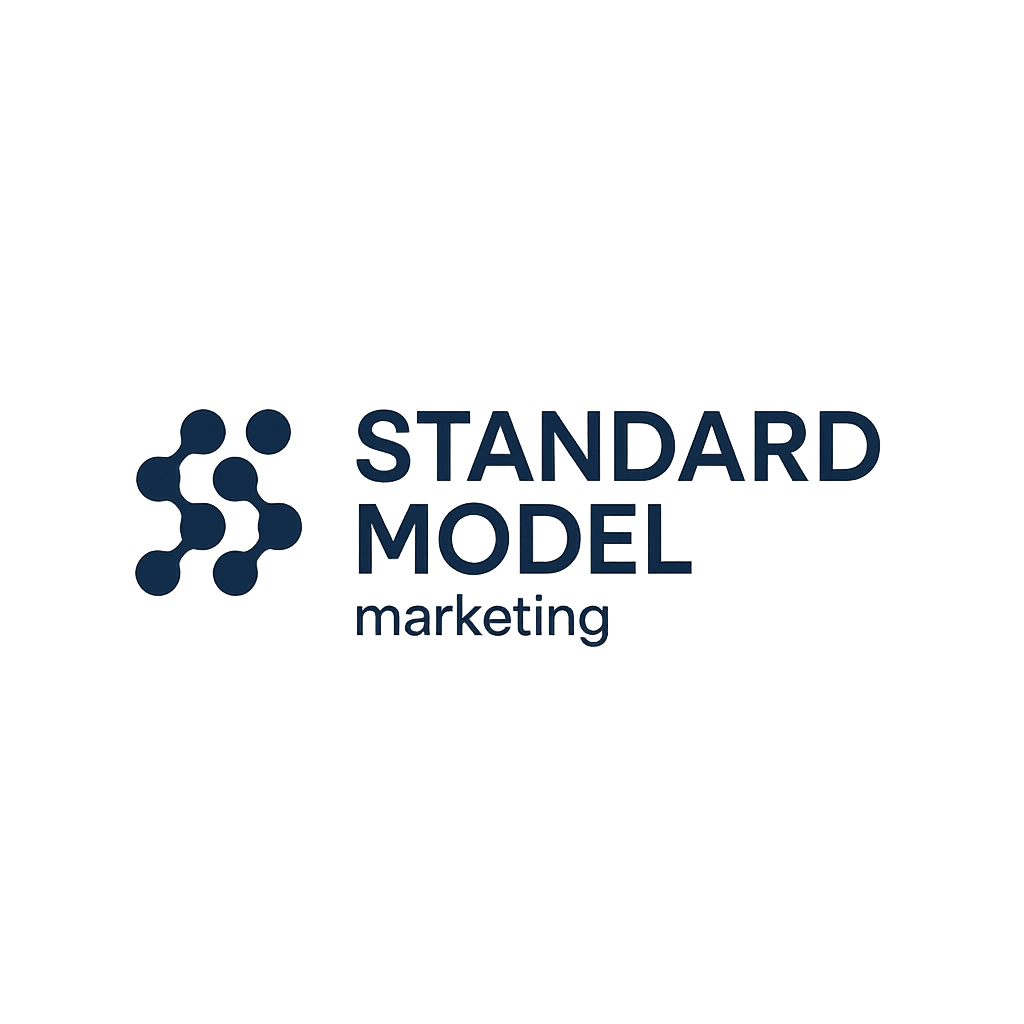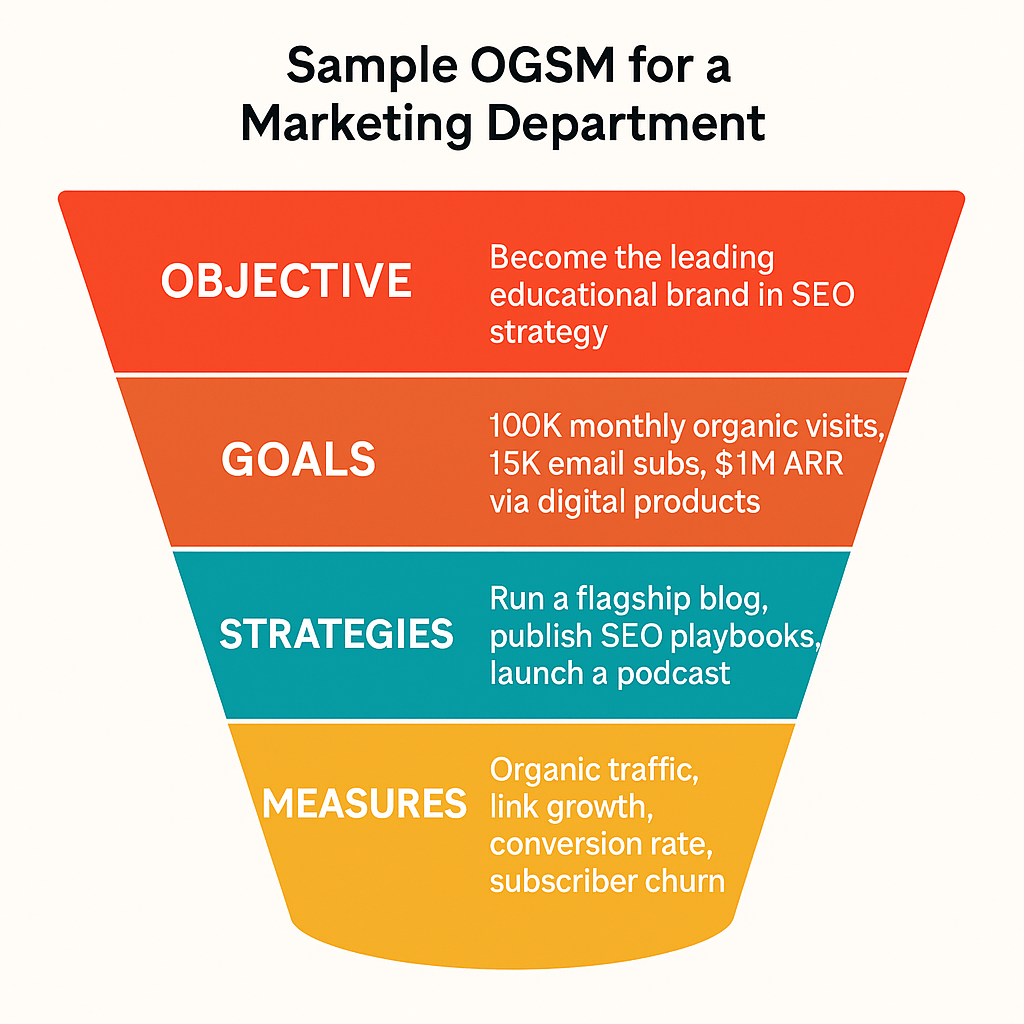
OGSM is a planning tool that helps people turn a vision into something you can act on. It’s used by companies, teams, and consultants who need to stay focused and track progress over time.
Rather than just setting goals or listing tactics, OGSM pulls everything together on one page — where you’re going, how you’ll get there, and how you’ll measure success.
Objective
The bigger picture. What you’re trying to achieve overall.
Example: Become a top player in sustainable packaging within three years.
Goals
Specific targets. Numbers and timelines that make the objective real.
Example: Increase market share from 12% to 25%.
Strategies
The main ways you’ll move toward the goal.
Example: Launch a new direct outreach campaign to procurement leaders.
Measures
How you’ll track what’s working.
Example: Inbound leads, conversion rate, revenue from new clients.

OGSM has been around for a while. It was first used by large companies in the manufacturing space and eventually spread to other industries. What made it stick was how straightforward it is — you don’t need a huge deck or complicated tools to use it. It works because it forces clarity.
Over time, marketing teams, product teams, and agencies started using it too — especially when they needed to align people across departments or stay focused over long timeframes.
OGSM is often mentioned alongside tools like OKRs and the Balanced Scorecard. Here’s how they differ:
| Tool | Use Case | Main Focus |
| OGSM | Long-term strategic planning | Links vision to action |
| OKRs | Short-term goal setting | Tracks progress with key results |
| Balanced Scorecard | Business performance tracking | Monitors performance across areas |
Marketing teams deal with a lot: brand work, campaigns, data, deadlines. It’s easy to lose the thread. OGSM brings things back into focus. It helps teams connect day-to-day work with long-term goals — and gives them something to measure against.
It’s especially helpful when:
| Part | Example |
| Objective | Become the go-to site for AI + marketing by 2026 |
| Goals | 1M annual visitors, 500+ media mentions, 10K email subscribers |
| Strategies | Weekly research posts, interviews with experts, targeted distribution |
| Measures | Domain rating, backlinks, qualified leads, list growth |
Want to go deeper into how marketers use this approach? See our OGSM guide for marketing teams.